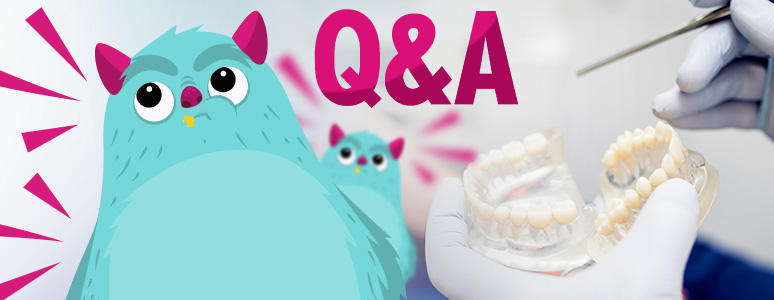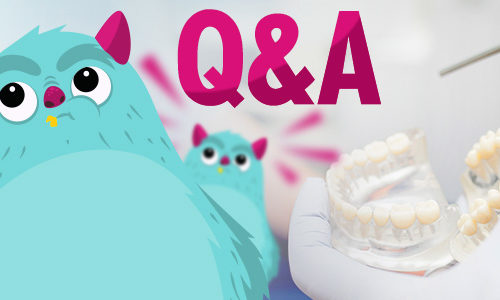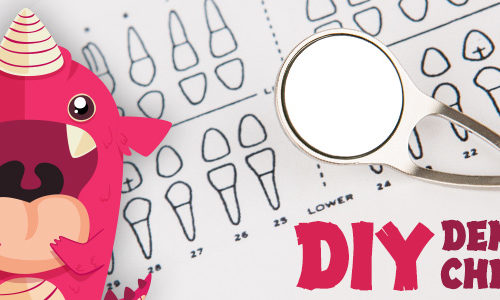-
10 Red Flags Your Dentist Might Be a Dud: How to Steer Clear of a Bad Dentist
Imagine walking into a dental office, bright and early, ready for your routine check-up. You trust your dentist to provide you with the best care possible. But what if you encounter a bad dentist who isn’t as competent as you think, or worse, is engaging in fraudulent practices? Recognizing the red flags in dental care can save you time, money, and unnecessary pain. Key Takeaways Identify warning signs such as outdated equipment, disregard for dental history and aggressive sales tactics when choosing a dentist. Look out for financial red flags including overbilling of non-essential services and high pressure sales. Check credentials, experience and referrals to ensure quality care with collaborative…
-
The Ultimate Guide to Invisalign: Straightening Teeth with Clear Aligners
A perfect smile has been a universal symbol of beauty, confidence, and personality. But what if the path to that perfect smile was clear, comfortable, and almost invisible? Welcome to the world of Invisalign, a revolutionary orthodontic treatment that makes the journey to a perfect smile as pleasing as the destination itself. Key Takeaways Invisalign is a revolutionary orthodontic treatment that offers an invisible and safe alternative to traditional metal braces. It provides tailored solutions for individuals with mild to moderate dental issues, from Invisalign Full for extensive treatment to Invisalign Lite for minor cases. Insurance coverage and payment plans are available, as well as proper care of aligners through…
-
Easing Toothache: Top 10 Effective Pain Relief Strategies for Tooth Pain
Ever been kept awake by a throbbing tooth or found yourself wincing at the cold touch of ice cream? Toothaches, ranging from mild discomfort to severe pain, are a common issue that many people deal with. But don’t worry, we’ve got a roadmap to guide you through the landscape of toothache pain relief. Key Takeaways Understanding toothaches involves identifying the cause and seeking professional care. Over-the-counter medications, cold compresses, elevating the head at night, numbing gels/ointments & rinsing techniques can provide temporary relief from pain. Good oral hygiene & seeing a dentist are recommended for prevention & treatment of continuous toothache. Understanding Toothaches Toothaches are a result of irritation to…
-
Tooth Decay: Proven Strategies for Cavities – Prevention and Repair
Understanding tooth decay is like deciphering a secret code. The more you know about it, the better equipped you are to prevent it. From the microscopic bacteria that start the decay process, to the foods and drinks that fuel the decay, to the symptoms and treatments, it’s a fascinating journey that can lead to a healthier and happier smile. Key Takeaways Understanding the causes and preventative measures of tooth decay is essential for combating this enemy. Regular dental checkups are necessary to detect and treat tooth decay, while fluoride treatments provide a shield against bacteria. Establishing good oral hygiene habits can help prevent cavities, as well as managing pain or…
-
Top Whitening Kits of 2024: Your Guide to a Brighter Smile
Ever dreamt of flashing a captivating, bright smile that can light up any room? Everyone does, right? Well, the quest for pearly whites has led to the burgeoning popularity of teeth whitening. With a myriad of teeth whitening products flooding the market, achieving that gleaming smile is just a few brush strokes away. But before you embark on this journey to a radiant smile, it’s essential to understand the world of teeth whitening. Key Takeaways Explore the four primary types of at-home teeth whitening kits and consider features, application techniques, active ingredients & efficacy for natural teeth. Recent technological breakthroughs have revolutionized teeth whitening with LED lights to accelerate process…
-
Managing Wisdom Teeth Swelling: Effective Tips for Comfortable Recovery
Swelling after wisdom teeth removal, also known as wisdom teeth swelling, might seem like an unwelcome guest, but in reality, it is an expected part of your healing journey. This swelling, while often discomforting, signals that your body is hard at work repairing the extraction site, paving the way towards a comfortable recovery. But the question is, how do we manage this wisdom teeth swelling effectively, and what are the best methods to minimize discomfort? Let’s find out. Key Facts Swelling following wisdom teeth removal is a normal part of the healing process, though potential complications can cause increased inflammation. Reducing swelling and promoting comfortable recovery involves cold compresses, anti-inflammatory…
-
Mewing Tutorial: How to Mew? Before and After Effects and Results, Meaning, Guide
Mewing is a term that’s become popular in online communities. It refers to a specific tongue posture technique that is claimed to have various benefits, primarily reshaping the facial structure. Here’s a brief overview: Origins of Mewing Mewing is named after Dr. John Mew, a British orthodontist. Dr. Mew and his son, Dr. Mike Mew, have promoted the idea that how you rest your tongue affects your facial structure, especially the development of the maxilla (upper jaw). Basic Principle of Mewing The fundamental principle behind mewing is that by maintaining proper tongue posture, one can potentially influence the shape and alignment of the face and jaw over time. Proper tongue…
-
Is It Bad (Is It OK) To Chew With Only One Side Of The Mouth?
This article is a part of our Q&A series in which we give detailed answers to our readers' questions. Have a question? Don't hesitate and send it to us to get a detailed answer! Chewing is a fundamental activity in our daily lives, essential not only for breaking down food but also for maintaining oral health. However, many people develop a habit of chewing on one side of their mouth. While this might seem like a minor issue, it can have significant implications for dental health. This article explores whether it is bad to chew with only one side of the mouth, the potential consequences, and how to address this…
-
Dentin Dysplasia – Type 1 (I), Type 2 (II), Types, Radiograph, Treatment, Histology, vs Dentinogenesis Imperfecta
Key Facts Dentin dysplasia affects dental development, primarily impacting the dentin, a key component of teeth Dentin dysplasia is a rare condition affecting one in every 100,000 people It usually becomes apparent in childhood and can affect both primary (baby) and permanent teeth The condition is characterized by abnormal dentin structure It’s leading to dental issues like discolored teeth, tooth mobility, or premature tooth loss What is Dentin? Dentin is the layer of tissue beneath the enamel, making up the bulk of a tooth’s structure. It’s harder than bone but softer than enamel. Dentin plays a crucial role in protecting the innermost part of the tooth, the pulp, which houses…
-
Oral Leukoplakia (OL) – Treatment, Causes, Images, Tongue, Differential Diagnosis
Key Facts Oral leukoplakia refers to thickened, white patches that form on the mucous membranes of the mouth, which cannot be wiped away It’s among the most common oral lesions, affecting approximately 1% of the global population While often benign, some types of leukoplakia can be precursors to oral cancer Strongly associated with tobacco use, including smoking and chewing, but can also result from irritations like rough teeth or fillings Treatment depends on the lesion’s appearance, the presence of symptoms, and if there’s evidence of cancerous changes What is Oral Leukoplakia? Oral Leukoplakia, derived from the Greek words leuko (white) and plakia (patch), describes white patches that form on the…



